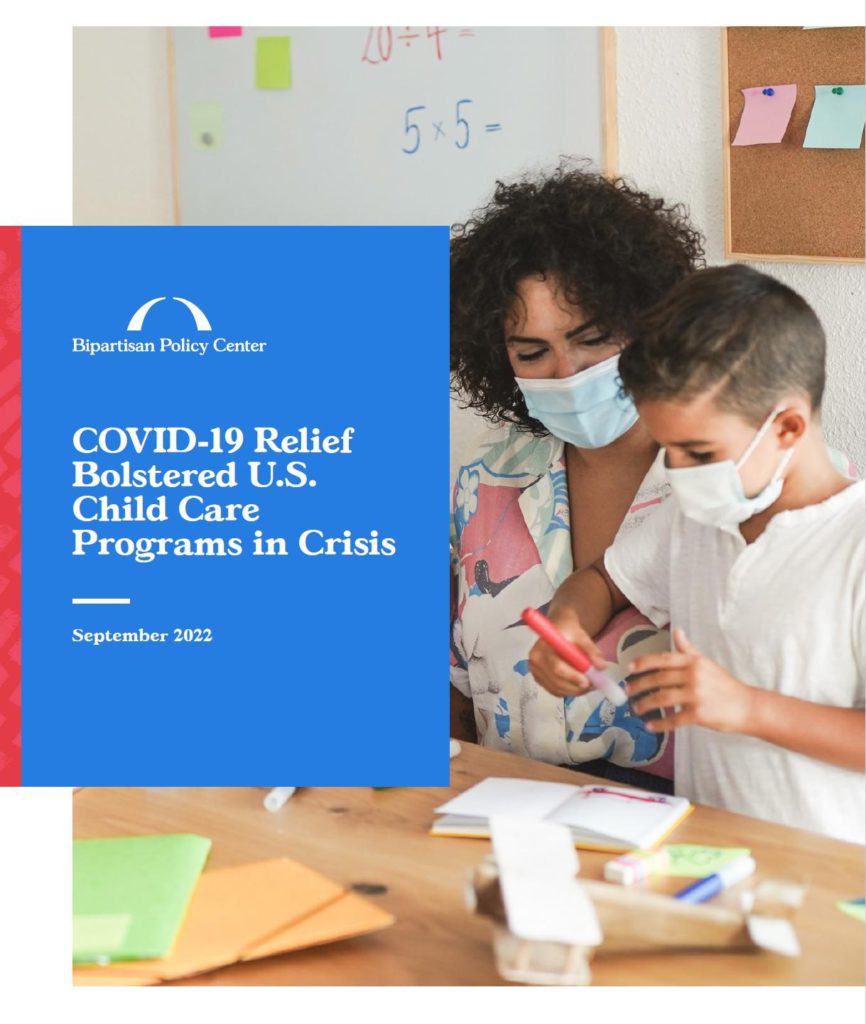October 1 marks the start of the new federal fiscal year (FY2023). As has been customary over the past decade or longer, Congress has not approved individual appropriation bills that fund federal agencies and the programs they administer before the start of the fiscal year. Therefore, as in past years, Congress has approved a continuing resolution to keep programs operating and, in some cases, to provide additional funding rather than freeze current spending.
The continuing resolution extends federal funding through December 16. This gives Congress an opportunity after the November elections to consider legislation for the full fiscal year (until October 1, 2023). It is unclear whether Congress will approve an additional extension (e.g., through January) or whether legislation will be passed to fund programs through the entire fiscal year. As this is my final blog as President at Child Care Services Association (CCSA), I thought it appropriate to focus yet again on the early educator workforce and the importance of investing in that workforce to expand access to high-quality child care.
As I have written before, high-quality child care programs depend on high-quality staff. However, today’s economy (while much recovered), has not yet filled the gap between the number of individuals working in child care prior to the pandemic (February 2020) and the number employed near today (as of August 2022). About 74,000 fewer individuals are working in child care currently, which is down just over 7 percent.1
Child care programs in North Carolina are doing better than other areas of the country, and this is due to the stabilization grants developed and rolled out by DCDEE. However, programs in North Carolina and across the country are still struggling to recruit and retain child care staff. Child care is a business. Program revenue to pay staff depends on private-pay fees from parents and child care subsidies paid by states. The reality is that parents cannot afford the real cost of high-quality care (e.g., to pay staff above the low wages paid today and wages more aligned with the important work that they do).
A study released last week by the Bipartisan Policy Center, which is based on the findings from an 11-state survey the organization conducted this summer, found that on average staff are earning $2 more per hour now compared to the pandemic (from $12 to $14 per hour for lead teachers and from $10 to $12 per hour for assistant teachers).2 Centers reported being able to pay higher wages as a result of receiving the stabilization assistance Congress provided through three COVID-19 relief bills (two measures in 2020 and the American Rescue Plan in March 2021).3

From the BPC study, it is clear that federal stabilization support helped child care providers stay open, pay expenses, recruit and retain staff and pay higher wages. However, much of this funding will expire next year. The funding has been extremely helpful as a temporary bridge, but fundamental weaknesses of the child care business model remain. The additional federal funds helped states work with child care programs to develop innovative strategies to better support the child care market. However, even a $2 per hour wage boost (while welcome news for those working in child care) is insufficient to compete against local employers in many communities. For example, Walmart, Target and many fast food businesses pay higher starting wages. That’s a tough choice for those working in child care—stay in a field you love where caring for children is your passion or take a job with often fewer training requirements and less stress that pays higher hourly wages to enable them to care for their own families.
There are many lessons learned from the supplemental federal child care funds Congress approved for states. When given additional resources, states have shown, and are continuing to show, innovative strategies to invest in the workforce that supports all other workforces. What is clear is that the child care business model leaves little room for innovation because too many of these small businesses operate on a shoe-string budget.
Child care is a public good. It is important for children, families, employers and communities. It is tied to economic recovery and economic growth. It is a two-generational support so parents can work and children can learn.
The continuing resolution expires December 16. That leaves approximately 2 ½ months for Congress to review the past investments in child care and how those investments have helped strengthen the child care market so many stakeholders rely on. At the core of any child care program is the staffing – how many staff are needed, the pay for that staff and the qualifications of that staff. Child care staffing cannot be outsourced; it is an onsite job that requires a combination of early childhood competencies and a passion for working with children.

It is time to use the upcoming weeks to make sure future funding continues the stabilization support and invests in staff recruitment and retention. Families need access to high-quality child care, but that doesn’t happen without the staff to deliver high-quality. Don’t forget that the upcoming elections are an opportunity in every state to vote for candidates at multiple levels of government and have them support child care funding. Let’s begin those discussions before December and make sure that child care funding investments are part of the year-long appropriations bill to be approved by Congress.
1 U.S. Bureau of Labor Statistics, The Employment Situation -- August 2022. https://www.bls.gov/news.release/pdf/empsit.pdf 2 Bipartisan Policy Center, COVID-19 Relief Bolstered U.S. Child Care Programs in Crisis, September 29, 2022. https://bipartisanpolicy.org/explainer/child-care-programs-crisis/ 3 Ibid.




